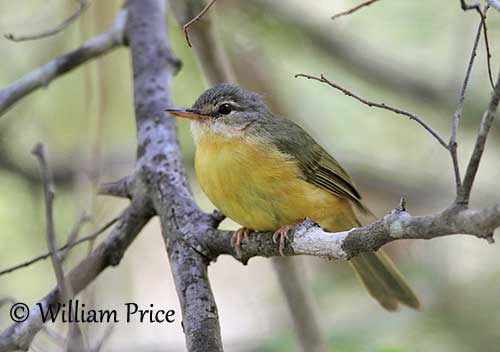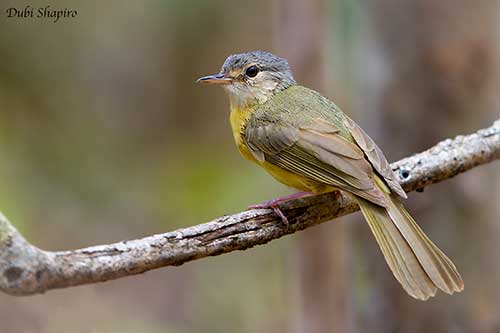
Fr: Bulbul d’Appert
Ang: Appert’s Tetraka
All: Appertbülbül
Esp: Bulbul de Appert
Ita: Bulverde di Appert
Nd: Apperts Tetraka
Sd: Apperts tetraka
Photographers:
William Price
PBase-tereksandpiper & Flickr William Price
Dubi Shapiro
Dubi Shapiro Photo Galleries & Dubi Shapiro's Pictures on IBC
Alan & Ann Tate
AA Bird Photography
Text by Nicole Bouglouan
Sources :
HANDBOOK OF THE BIRDS OF THE WORLD Vol 10 by Josep del Hoyo-Andrew Elliott-David Christie - Lynx Edicions - ISBN: 8487334725
The Birds of Africa: Volume VIII: The Malagasy Region: Madagascar, Seychelles, Comoros, Mascarenes - Par Roger Safford, Frank Hawkins – ISBN: 1408190494, 9781408190494- Editeur: A&C Black, 2013
Birds of Madagascar and the Indian Ocean Islands Par Roger Safford, Adrian Skerrett, Frank Hawkins – ISBN: 1472924118, 9781472924117- Editeur: Bloomsbury Publishing, 2015
Avibase (Denis Lepage)
Wikipedia, the free encyclopaedia
CREAGUS - MALAGASY WARBLERS Bernieridae
Appert’s Tetraka
Xanthomixis apperti
Passeriformes Order – Bernieridae Family
INTRODUCTION:
The Appert’s Tetraka is endemic to Madagascar where it occurs in the south-west of the island, in a very small range including deciduous forests and some remains of evergreen forest.
This small passerine was only described in 1972, and following considerable taxonomy confusion, it is now included in the Malagasy warblers, a new endemic Malagasy family.
This species is threatened by habitat loss through forest clearance, and it is currently listed as Vulnerable.
The name of this species pays tribute to the Reverend Otto Appert, a Swiss missionary in Madagascar and amateur naturalist.
DESCRIPTION OF THE BIRD:
Biometrics:
Length: 15 cm
Weight: 11-17 g
The Appert’s Tetraka adult has greenish olive-grey upperparts and tail. The upperwing is slightly darker, but the flight-feathers have narrow yellow fringes on the edges.
The underparts are yellow, with brighter flanks, and the centre of the belly is mostly whitish.
Top of head and neck are blue-grey. We can see a creamy-white to pale grey supercilium, broadest in front of the eye and narrower behind. There is a grey eyestripe, darker on lores and much paler behind eye. The ear-coverts are blue-grey. Chin, throat and malar area are white.

The bill is dark on upper mandible with pale cutting edges, whereas the lower mandible is pale pinkish with small dark tip. The eyes are dark brown, surrounded by pale greyish eyering above and below, and mostly dark grey in front and behind eye. Legs and feet are pale horn to flesh-coloured.
Male and female have similar plumage, but the female is slightly smaller than male.
The juvenile is not described.
RANGE:
The Appert’s Tetraka occurs in SW Madagascar. It is only known from four forest patches, in Zombitse, Vohibasia, Analavelona and Salary Bay. It can be seen from sea-level up to 600-800/900-1330 metres of elevation.
HABITAT:
The Appert’s Tetraka frequents dry deciduous forests at Zombitse-Vohibasia National Park, and a second population occurs in montane evergreen forest at Analavelona Classified Forest. The first area is under conservation project and the second one is remote and currently not threatened by deforestation.
CALLS AND SONGS: SOUNDS BY XENO-CANTO
The Appert’s Tetraka gives high-repeated “tsit…tsit…tsit” notes and short trill “prrp…prrp” with distinct trilling notes.
The song includes very high-pitched, repeated notes “sit…sit…sit” continuing in descending series of louder notes “sisisiseeseeseesipsip” with penetrating middle notes and harder final notes.
The alarm call is a high-pitched “tsirr”.
BEHAVIOUR IN THE WILD:
The Appert’s Tetraka feeds mainly on arthropods. It is highly terrestrial and feeds near and on the ground. It feeds by gleaning for invertebrates, searching for prey among the leaf litter or from low branches while walking with dropped wings. Some flushed invertebrates can be caught in flight after a short chase.
It forages in family groups of 2-9 individuals, and sometimes joins mixed-species flocks.
When not feeding, it perches about 1 metre above the ground in low shrub for preening or when threatened.

The breeding habits of this species are poorly known, and information is required.
The Appert’s Tetraka is probably sedentary and flies only short distances between its foraging areas.
REPRODUCTION OF THIS SPECIES:
The Appert’s Tetraka builds a nest similar to other Xanthomixis species, a deep cup hanging from horizontal fork in understorey shrub. This structure is made with woven plant fibres and spider webs, with dead leaves to decorate the outside.
A subadult was recorded in April.
PROTECTION / THREATS / STATUS:
The Appert’s Tetraka has very restricted range. It is threatened by forest clearance for agriculture expansion. However, this species occurs mainly in protected and remote areas.
The population size falls into the band 1,000/2,499 individuals, roughly equating 600/1,700 mature individuals. It is suspected to be stable, as the species shows apparent resistance to low levels forest degradation.
But currently, the Appert’s Tetraka is listed as Vulnerable.
